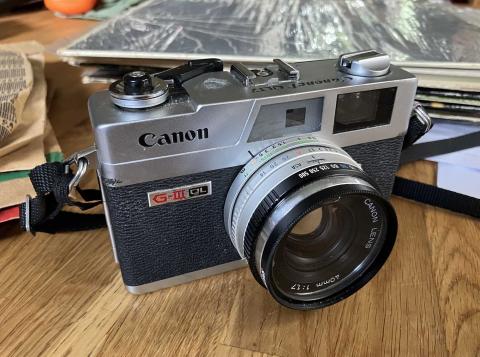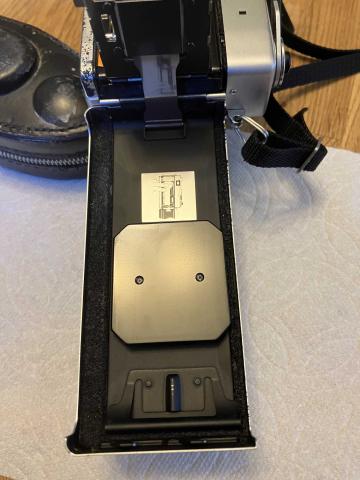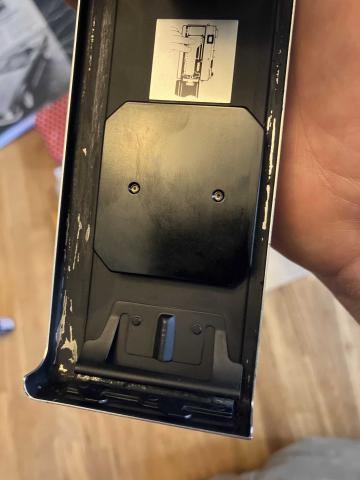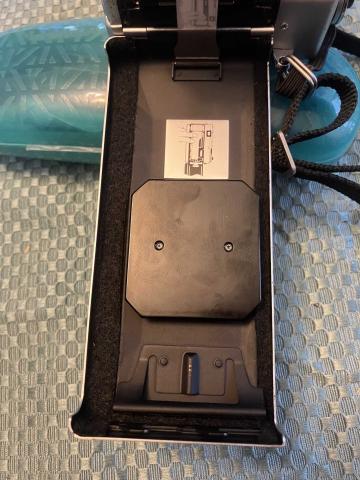Whenever I go to estate sales, unless I'm there for something specific, the main things I'm looking for are tools, records/78s, old tube audio gear, and old camera gear. Most of the time they don't have more than a smattering of plastic compact film and digital cameras, maybe a couple of Kodak Brownies or Polaroid pack film cameras. I'm really only interested in something I can use in the limited (and sporadic) film shooting that I do.
This week I lucked out with this neat Canon rangefinder.
It was Canon's most popular camera in the 1970s, and it's easy to see why. It feels as well-built and solid as any SLR camera of the time, but it's a fixed-lens coupled rangefinder, so it's quick and easy to use. It has automatic exposure and a nice meter display in the viewfinder, but is also fully usable in manual mode. The lens is a quick 1.7f, and it has a quick loading film system that makes film changes super easy.
In a quick check, the camera seemed to sometimes work just fine and sometimes weirdly balk, but they only wanted $5 for it, so I brought it home. I opened the back but there was a roll of film in there, so I quickly closed it again. They didn't have a case for it, but in hindsight I should have checked to see if they also had the matching flash unit that was built for it. I rarely use a flash for anything anyway.
Cameras of this era are really solid, and unless they get wet (like when I dropped a nice Practikamat into a creek), they usually work great with a bit of cleanup. The 2 main weak links are the battery and the light seals, which are a soft, rubbery foam that crumbles and falls apart over time.
There's lot of documentation on the battery issue, but the summary is that the light meters in these cameras were designed to use a 1.35 volt mercury battery that's no longer available in the US for mercury hazard reasons. Just see if it would work I tried a 1.5v alkaline replacement cell, and got nothing from the light meter or the built-in test lamp, so that will need more advanced repair at some future date. Happily, it works fine on manual mode without a battery.
This one still had the original seals, which are a mess. You can see bits of seal stuck to the body at the upper left. There are 3 main seals to replace on the camera back: a narrow strip along the top (right side of this pic), a short narrow strip along the latch (right below the curved spring at the bottom of the pic), and the wide strip at the bottom of the camera back. There's also a hinge seal on the body, but it looks like a patch of velvet that's still in good shape so I didn't change that.
I got some q-tips and alcohol and cleaned out the old seals. I scraped through the paint in a few places, but that will all be covered by the new seal so I didn't bother repainting anything.
For the new seals, I got a sheet of Presto felt from a craft store. This is thin self-adhesive felt, about 1-1.5mm thick. I cut strips with a scissors and stuck it down in the same place as the old seal. I used a toothpick to poke it into the corners and make sure it was well adhered.
New seals are installed and no problems closing the back. I don't know how to really test the light seals, so I put in the first test roll of film and started shooting.
The other small fix I did was on the lens cap. It's just a cheap slip-on plastic cap and it fits really loosely and falls off. A clip-on cap would be more secure, but I added a short strip of felt to one side of the cap and that seems like enough to help keep it on in the camera bag. I added a new lens cap leash to keep it with the camera.
I'll update this with test images when they're back from developing.






